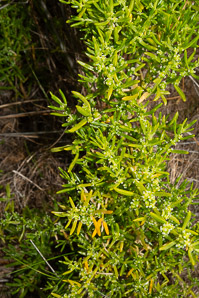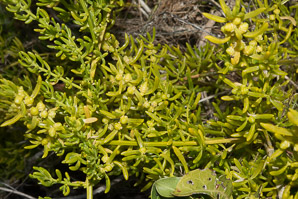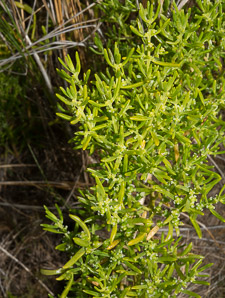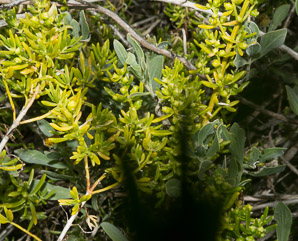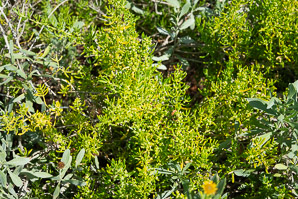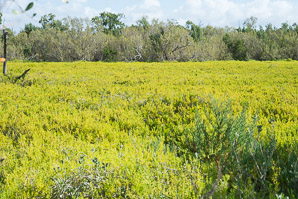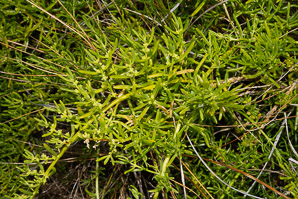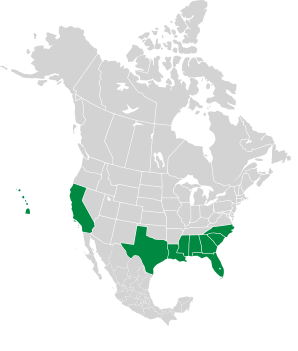
|
Batis maritima L. Saltwort, turtleweed, beachwort, pickleweed, barilla, planta de sal, camphire, herbe-à-crâbes, akulikuli-kai
Saltwort is a long-lived salt-loving perennial, between endangered and invasive depending upon locale. It inhabits salt and brackish marshes and mangrove swamps. They are first to appear after hurricanes or other events that clear land. They are found on the coasts of North, Central and South America. Plants: These are “subshrubs” 1½-5′ (50-150 cm) in height and up to 6½′ (2 m) around. They form dense colonies. Stems grow vertically at first, lying down under their increasing weight and trailing to form loose mats. Branches are often 4-angled, sometime 3- or 5-angled. Leaves: Simple, opposite, succulent, almost cylindrical, and sessile (attached directly to the stem). They are up to ⅞″ (2.5 cm) long. Sap is salty, and smells slightly of vinegar. Flowers: Tiny and white. Male and female flowers occur on different plants. They form small green clusters, appearing June-August. Fruits: Greenish-yellow fruits, vaguely resembling pickles, are ⅜-¾″ (1-2 cm) long, and roughly cylindical. They float on seawater to disperse. Edibility: Leaves are salty, eaten raw or cooked, as potherb, puree, or pickles. Seeds are edible in salads, toasted, or “popped” like corn. Boiling leaves reduces their salt content. Seeds are high in oil and nutritonal value, and could serve as a commerical food source. Online References:
Cabi.org’s Invasive Species Compendium The Lady Bird Johnson Wildflower Center 4/13/2015 · Flamingo Campground, Everglades National Park, Florida · ≈ 7 × 11″ (18 × 28 cm) 4/13/2015 · Flamingo Campground, Everglades National Park, Florida · ≈ 10 × 7″ (25 × 16 cm)
Batis maritima description by Thomas H. Kent, last updated 25 May 2020. © FloraFinder.org. All rights reserved. |
4/13/2015 · Flamingo Campground, Everglades National Park, Florida · ≈ 7 × 10″ (16 × 25 cm) 4/13/2015 · Flamingo Campground, Everglades National Park, Florida · ≈ 11 × 7″ (28 × 18 cm) 4/13/2015 · Flamingo Campground, Everglades National Park, Florida · ≈ 2 × 1′ (59 × 39 cm) 4/13/2015 · Flamingo Campground, Everglades National Park, Florida 4/13/2015 · Flamingo Campground, Everglades National Park, Florida · ≈ 15 × 10″ (37 × 25 cm) Range:
|
